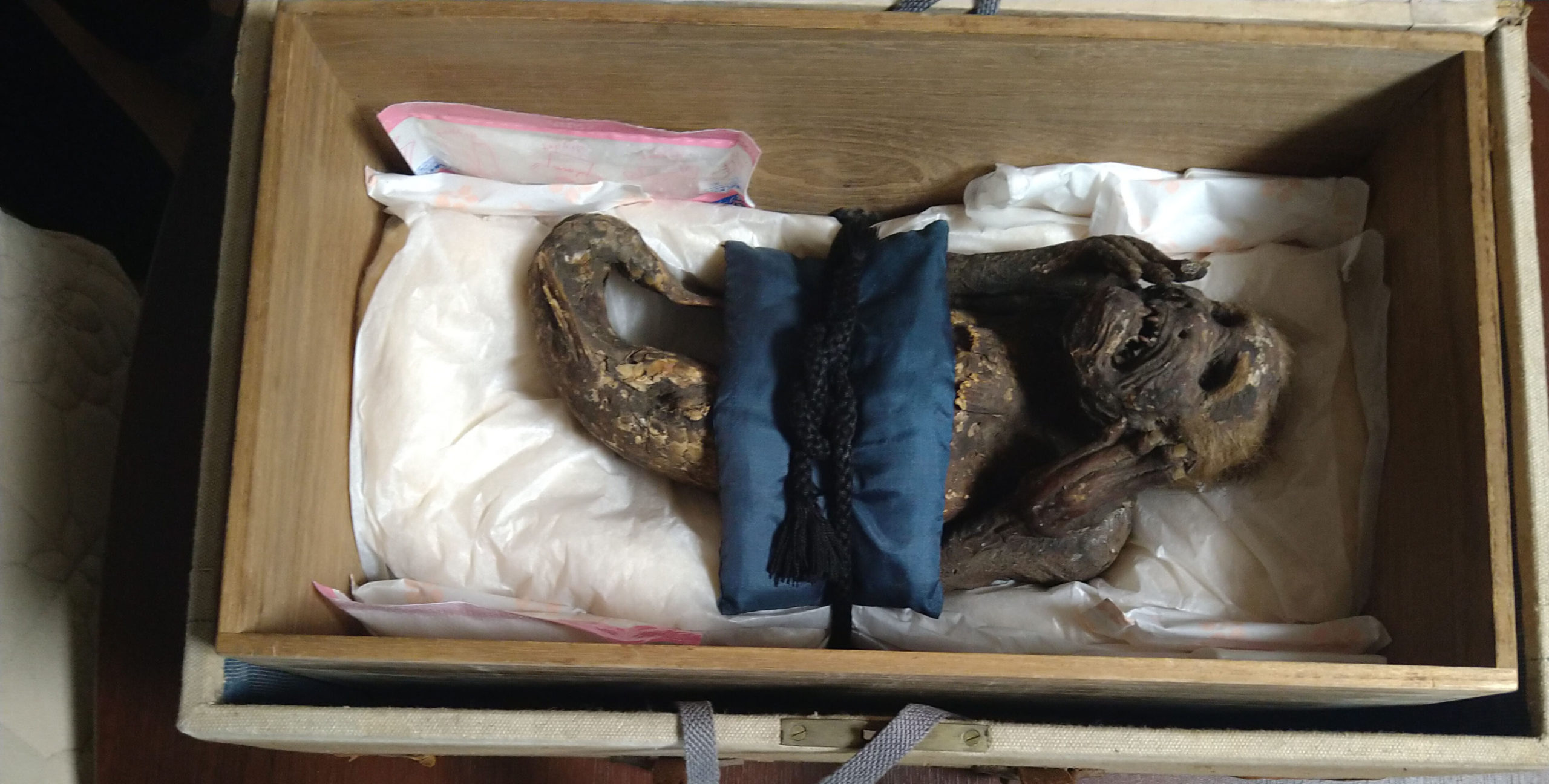
A recently discovered mummified “mermaid” that scientists believed to be a disturbing combination of animal parts has turned out to be even stranger than initially thought, according to new research findings.
In 2022, the researchers stumbled upon the mermaid inside a sealed wooden box located in a Japanese temple in Okayama Prefecture. The mermaid, which is only 12 inches long, was originally believed to be created from a decapitated fish’s body sewn onto the torso and head of a monkey.
Displayed For Worship
After being on display in a glass case at the temple for worship for more than 40 years, the frightening creature was placed away in storage. It resembles a Ningyo, a fish-like monster from Japanese mythology with a human head, that was supposed to have healing qualities and to prolong lifespan.
Inside the mummy’s box was a letter that claimed the specimen had been caught by a fisherman between 1736 and 1741. However, the researchers suspect that it was more likely created decades later as a hoax to sell to wealthy individuals looking to improve their health or prolong their lifespan.
KUSA Obtained Permission From Temple Priests
In early February 2022, researchers from the Kurashiki University of Science and the Arts (KUSA) in Japan obtained permission from the temple’s priests to examine the mummified ‘mermaid’.
The researchers started their assessment of this peculiar artifact by using a wide range of methods, including X-ray and CT (computerized tomography) scanning, radiocarbon dating, electron microscopy, and DNA analysis.
Their goal was to unravel the mystery of the mermaid’s origins and uncover any clues that would shed light on its unusual creation.
The results of the research were finally released by the KUSA team on February 7th in a statement translated from Japanese.
Surprising Findings of the Research
The team’s findings showed that the mermaid’s torso was not made of a monkey’s head and torso, as originally believed. Instead, the torso was made predominantly from cloth, paper, and cotton, which were held together by metal pins running from the neck to the lower back.
In addition, the body had been decorated with a paste consisting of sand and charcoal that had been mixed together.
Despite this, the mermaid’s torso was covered in components stripped from other animals. The arms, shoulders, neck, and cheeks were covered in mammal hair and fish skin, likely from a pufferfish.
The mermaid’s jaw and teeth were believed to have been taken from a predatory fish, and its claws were made from keratin, indicating that they were likely from a real but unidentifiable animal.
The bottom half of the mermaid was indeed derived from a fish, most likely a croaker of some kind. This ray-finned fish is well-known for its ability to produce a croaking sound with its swim bladder, which allows it to maintain precise control over its buoyancy.
Despite the researchers’ efforts, they were unable to identify any complete DNA from the mermaid. Radiocarbon dating of the scales, on the other hand, revealed that they may have been from as long ago as the early 1800s.
Latest Findings of the Research
According to the findings of the team’s most recent investigation, the mermaid was fabricated, almost certainly in order to trick people into thinking that Ningyos and their purported healing qualities were genuine.
The truth behind the 300-year-old 'Mermaid mummy' 'caught in the #Pacific #ocean
A mummified #Mermaid that is worshipped in #Japan has been exposed as nothing more than a fabrication of cloth, paper, and cotton decorated with #fish parts. #world pic.twitter.com/l1whcQTNvk— CHAUDHRY IMRAN ™💎 (@chimran55) February 19, 2023
The researchers concluded that the counterfeit creature was created with much more effort than initially believed.
Japan has seen the discovery of 14 other ‘mermaids’, and the KUSA team now hopes to analyze them for comparison. The findings have caused a stir in the scientific community and generated fascination among those interested in mythology and folklore.
See all the latest news from Greece and the world at Greekreporter.com. Contact our newsroom to report an update or send your story, photos and videos. Follow GR on Google News and subscribe here to our daily email!



